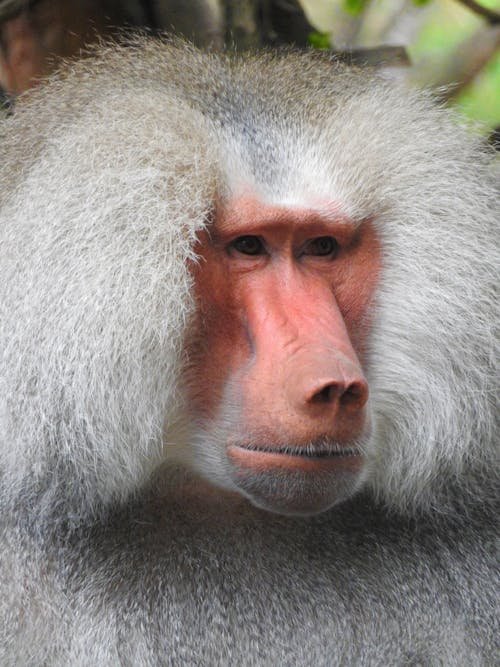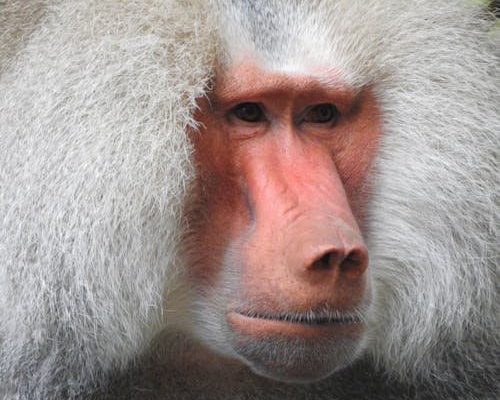
Baboons are part of the Old World monkeys and belong to the genus *Papio*. They live in various habitats across Africa and parts of Arabia, making them a common sight in savannas, woodlands, and even mountainous areas. But how did these remarkable creatures come to be? Let’s take a step back in time and explore their evolutionary journey, from distant ancestors to the lively baboons we see today.
Understanding the Origins of Baboons
To kick things off, let’s travel way back to the time when primates first appeared on Earth. This was about 65 million years ago, long before there were any baboons. The early primates were small, tree-dwelling creatures, a bit like today’s lemurs. Over time, these early mammals evolved into various forms, adapting to changing environments.
Interestingly, the ancestors of modern baboons belong to a group of primates called Old World monkeys. These monkeys started to appear around 30 million years ago in Africa and Asia. As they evolved, they developed physical traits that helped them thrive in diverse habitats—traits like strong limbs for climbing, sharp eyesight for spotting predators, and even complex social behaviors that laid the groundwork for the baboons we know today.
Baboons branched off from other monkeys about 2.5 million years ago, evolving into species we recognize now: the chacma baboon (*Papio ursinus*), olive baboon (*Papio anubis*), yellow baboon (*Papio cynocephalus*), and hamadryas baboon (*Papio hamadryas*). Each species adapted to their unique environments.
Key Characteristics of Baboons
You might be wondering what makes baboons so special. Aside from their playful nature and bright colors, they have some unique physical and social characteristics. First off, their size varies depending on the species. For instance, chacma baboons can weigh up to 100 pounds, while olive baboons are a bit smaller.
Baboons are instantly recognizable by their long, dog-like muzzles, sharp teeth, and distinctive fur, which can range from brown to gray. One striking feature is their ischial callosities—these are hard patches of skin on their rumps. They help baboons sit comfortably on rough surfaces, which is pretty handy when you’re climbing trees or hanging out on rocky ground.
Socially, baboons live in troops that can number in the hundreds. These troops are matriarchal, meaning females often lead and determine group dynamics. They work together to raise their young and defend their territory against predators, making them truly a community-oriented species.
The Role of Environment in Baboons’ Evolution
Now, let’s dig into how the environment shaped baboons over millions of years. As climates changed and forests shrank, many primates adapted by moving into open savannas and grasslands. Baboons became more terrestrial, meaning they spend a lot more time on the ground compared to tree-dwelling relatives.
This shift brought about changes in diet, too. Unlike their forest-dwelling cousins, baboons developed the ability to eat a wide variety of foods, including fruits, seeds, roots, and even small animals. Their digestive systems adapted to process these new food sources effectively.
You might picture a baboon rummaging through the grass or bushes for a tasty snack. This adaptability not only helped them survive but also thrive in diverse habitats. They became opportunistic foragers, which is vital for living in unpredictable environments where food sources can change rapidly.
The Social Structure of Baboons
Baboons are known for their complex social structures, which are crucial for their survival. The troops, consisting of multiple females, their offspring, and a few males, are tightly knit. They communicate using vocalizations, facial expressions, and body language, creating a rich social environment that allows for cooperation and bonding.
Within these troops, there’s a strict hierarchy. Males often compete for dominance, allowing the alpha male to mate with females. This behavior isn’t just about physical strength; it often involves alliances and social bonds. Baboons will groom each other, reinforcing these ties and ensuring cooperation when it counts.
Interestingly, the matriarchs—usually the oldest females—play an essential role. They pass down knowledge about food sources, predators, and social interactions, providing young baboons with critical survival skills. It’s like having a wise grandmother guiding the family!
Common Misconceptions About Baboons
Many folks have preconceived notions about baboons, often viewing them as aggressive or troublesome animals. While they can be territorial, they are also incredibly social and intelligent. Learning about their behavior helps dispel these myths.
For example, when watching a troop of baboons, you might see them engaging in playful antics or grooming each other. This isn’t just for fun; grooming strengthens social bonds and helps maintain peace within the troop. Their playful nature often goes overlooked, hiding the depth of their social interactions.
Another misconception is that all baboons are the same. With four species, there’s a lot of variety in size, appearance, and behavior. Each species has unique adaptations for their specific environments, highlighting the incredible diversity in the baboon family and making every troop distinct.
Conservation and the Future of Baboons
As we look at the evolution of baboons, it’s essential to consider their future. Baboons are currently facing pressures from habitat loss, hunting, and human-wildlife conflict. As their natural habitats shrink due to urbanization and agriculture, their populations are increasingly at risk.
Conservation efforts are crucial to protect these remarkable creatures. Initiatives include habitat preservation, reducing human-baboon conflict, and raising awareness about their ecological importance. Baboons are not just fascinating animals; they play an important role in their ecosystems, helping with seed dispersal and maintaining healthy environments.
You might think, “What can I do to help?” Supporting local conservation programs, spreading awareness about the importance of biodiversity, and even responsible tourism can make a difference. Every little effort counts when it comes to preserving these incredible primates for future generations.
In exploring the evolutionary history of baboons, we gain insight into how these social creatures have adapted over millions of years. From their ancient ancestors to their vibrant life in troops today, baboons exemplify the wonders of evolution and the intricate web of life.
As we consider their complex social structures, adaptability, and the challenges they face, it’s clear that baboons are more than just amusing animals— they’re a crucial part of our planet’s biodiversity. So next time you catch a glimpse of a baboon, remember the incredible journey that brought them here and the importance of protecting their future.
By fostering a better understanding of these amazing primates, we can appreciate the role they play in our world and take steps to ensure they thrive for years to come.

